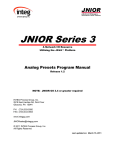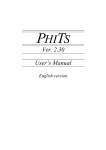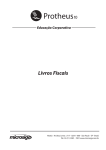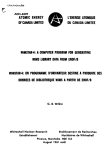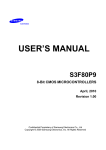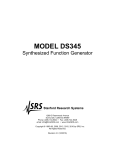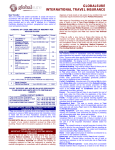Download ATOMIC ENERGY L`ENERGIEATOMIQUE OF CANADA LIMITED F
Transcript
AECL-8776 ATOMIC ENERGY OF CANADA LIMITED L'ENERGIEATOMIQUE DU CANADA LIMITEE &£*SM F ^ & j f MODIFICATIONS TO THE FISS PROGRAM Modifications apportees au programme FISS J.V. DONNELLY Chalk River Nuclear Laboratories Laboratoires nucleates de Chalk River Chalk River, Ontario November 1985 novembre ATOMIC ENERGY OF CANADA LIMITED MODIFICATIONS TO THE FISS PROGRAM by J.V. Donnelly Reactor Physics Branch Chalk River Nuclear Laboratories Chalk River, Ontario KOJ 1J0 1985 November AECL-8776 L'ENERGIE ATOMIQUE DU CANADA, LIMITEE Modifications apport§es au programme FISS par J.V. Donnelly Resume 'FISS1 est un code d'ordinateur servant a examiner les strategies alternatives du, cycle du combustible, executant des simulations de systeme qui tiennent compte des effets dynamiques des systemes en pleine croissance. Les changements, qui ont ete fait au programme original de FISS, presente dans le rapport AECL-5814, y sont dScrlts. Diparteraenc de la physique du reacteur Laboratoires nucleaires de Chalk River Chalk River, Ontario KOJ 1J0 1985 novembre AECL-8776 ATOMIC ENERGY OF CANADA LIMITED MODIFICATIONS TO THE FISS PROGRAM by J.V. Donnelly Abstract 'FISS1 is a computer code for use in investigating alternative fuel cycle strategies, performing system simulations accounting for the dynamic effects in growing systems. The changes that have been made to the original FISS program reported in AECL-5814 are described. Reactor Physics Branch Chalk River Nuclear Laboratories Chalk River, Ontario KOJ 1J0 1985 November AECL-S776 TABLE CF CONTENTS 1. Introduction 2. Free Format Incut 3. Power Allocation 4. Code Description 4.1 4.2 4.3 4.4 4.5 4.6 4.7 4.8 4.9 4.10 4.11 4.12 4.13 4.14 4.15 4.16 4.17 4.18 4.19 4.20 4.21 4.22 FISS INPUT INCST INITIAL LAG INDEX PDEF PDEF12 P2INT INTEGP2 PDEF123 FLOWS FRONT FISSARB REPROC ENRICHF EXCESS FUELENR ENRICH UNIT 11 CASH OUTPUT 5 5 5 6 6 6 7 7 7 7 7 5.1 FISS Input Description 8 5.2 Costing Input Description 14 6. References 15 MODIFICATIONS TO THE FISS PROGRAM 1 by J.V. Donnelly 1. Introduction The purpose of this document is to supplement the original FISS manual, AECL-58141. This report describes the changes that have been made to the FISS program since the first report. The main areas that have been changed are : - free format input routine and - improved allocation of power between systems involving fissile recycle. This report has been written for a code user who is already familiar with the FISS program. 2. Free Format Input The case input for FISS has been modified to allow free format, which simplifies the preparation and modification of case descriptions, especially when the cases are prepared interactively. The input is read using the AELIB2 routx^e FREEIN. In general, the case input is very similar in content to that described in the original report. An input description can be found in Section 5. 3. Power Allocation In the original version of FISS, the way in which power production was allocated between the three possible reactor types was done in a fairly simple manner and worked well for all simple scenarios, and some of the more difficult ones. There were somu problems encountered, however, in a number of scenarios involving one reactor type supplying another reactor type with fissile material. The problem encountered in this type of scenario was that it was difficult to judge the future fissile requirements in a dynamic system from the current conditions, as FISS attempted to do. In some scenarios the method used in FISS allowed an advanced reactor to be introduced too quickly during one time period (because there was a significant inventory of fissile material available), which caused the availability of fissile material to be exceeded in a later time period. The methodology used in the original FISS was to try to reduce the rate of introduction of an advanced reactor type (PRDF), but this method quite often required a case to be re~run a number of times before a reasonable scenario was calculated, and there was no assurance that the introduction rate would be optimum over the entire scenario. The method of power allocation was significantly improved by having FISS automatically determine the maximum rate of introduction of an advanced reactor type that could be carried out without exceeding the availability of fissile material. This method was implemented by integrating the fissile inventory forward in time as far as was necessary to determine the minimum fissile inventory. An iteration is performed, if necessary, to determine the maximum installed capacity of the advanced reactor type that will not exceed the fissile production at any point in the future. Although this method of determining the installed capacities significantly increases the time required for a FISS calculation, sufficient tests are performed to ensure that the forward integration and iterations will only be performed if the scenario requires it and then only over the necessary time period. A detailed description of the logic used in the power allocation can be found in Section U, in the description of the routines, PDEF, PDEF12, P2INT and INTEGP2. The improved method of power allocation now allows a wider range of scenarios to be calculated in a well behaved and realistic manner. 4. Code Description The FISS program performs the same simulation as was described in the report AECL-581^ and uses, in general, the same method of calculation. In the following description, those areas that have not changed since the AECL-SSi't description will not be detailed. Those areas in which significant changes or improvements have been made will be described in greater detail. For the purpose of FISS calculations, the treatment of thorium and depleted uranium fertile materials is the same. In the following descriptions, when the reactor fuel.type is discussed, thorium or depleted uranium fuel will be abbreviated Th/DU. 4.1 FISS This routine is the main program, and controls the main flow of calculation. The sequence of steps performed is as follows: - Input data is read by INPUT. - If the costing option has been selected, costing data is read by INCST. - Initialization of some constants and coefficients is performed by INITAL and LAG - The installed powers for the initial part of the simulation are calculated. This calculation proceeds forward in time as far as is necessary to determine the material flows at the start of the simulation. The routines INDEX and PDEF are called to define the time indices and installed powers. - The code executes the main simulation loop, advancing forward in time until the simulation is complete. - INDEX is called to define the time indices. - PDEF is called to define the installed cowers. - FLOWS is called to define the material flows in each reactor system. - OUTPUT is called to report the results of the simulation. - If the simulation is at a year boundary, CASH is called to calculate cash flows. At completion, the simulation will have advanced far enough forward in time to define all of the material flows throughout the simulation period. The results that have been accumulated on files are printed by OUTFIL. 4.2 INPUT This routine reads the main input data, as described in Section 5.1. it.3 INCST This routine reads the cost input data, as described in Section 5.2. H.H INITAL This routine calculates a number of constants required by the rest of FISS. The quantities are: - the earliest year at which material flows destined for each reactor system can begin, - constants used in the material flow calculations and - specific uranium commitments for each reactor type. 14.5 LAG This routine determines the lead time necessary for the calculation of material flows to the reactors, given the system time delays and reactor types. 4.6 INDEX This routine calculates the time indices used in the calculation of material flows. The indices relate the material flow to the reactor power production at later or earlier times depending on the location of the particular flow path in the reactor system and the system time delays. 4.7 PDEF This routine allocates power among the three reactor types. constraints are: The main 1. maximum installed powers in each reactor type (specified on input Cards 3 4 ) , 2. decommissioning restraints, and 3. limits to the availability of fissile material for topping. The decisions made during power allocation depend on the number of reactor types in the system at a given time: One Reactor Type in the System If the total demand power has not decreased since the last time step, the power in reactor type one will be equal to the total power. If the total demand power has decreased, the decrease in installed powers in reactor type one will be limited to those that are currently available for decommissioning. Two Reactor Types in the System If there are two reactor types that can potentially produce power, the routine PDEF12 will be called to allocate powers between the two reactor types. Three Reactor Types in the System If there are three reactor types that can potentially produce power, the routine PDEF123 will be called to allocate power among the three reactor types. 4.8 PDEF12 This routine allocates power in a two reactor system. The main objective is to install as much of the total power in reactor system two as possible. The routine follows two main paths, depending on whether the second reactor type may be limited by the availability of fissile material. If reactor type two is allowed to use enriched uranium as topping, there will be no limitations on the availability of fissile material. The power in reactor type two will be maximized, limited by: (a) the maximum installed power in reactor type two (as specified on Cards 3*0, (b) the maximum total system power (as specified on Cards 34), (c) the maximum rate of decommissioning of reactor type one, and (d) if the criteria above indicate that the power in reactor system 2 ought to be decreased, the power will be limited to the amount of installed capacity of reactor type two that is available for decommissioning. If reactor type two cannot use enriched uranium, the amount of power installed in that system will be limited by the availability of fissile material for topping. This routine determines the maximum amount of power that can be installed in reactor type two during the current time step without exceeding the supply of fissile material at some point in the future. The method used is as follows: 1. Reactor type two is set to its maximum installed power in the current time step, limited by (a), (b) and (c) above. The minimum fissile inventory in the future is calculated by P2INT. If this minimum inventory is greater than zero, the availability of fissile material is not limiting at the current time and PDEF12 is complete. 2. Reactor type two is set to its minimum power at the current time step, limited by (d) above. The minimum fissile inventory in the future is calculated by P2INT. If this inventory is less than zero the availability of fissile material will be exceeded at some point in the future, but nothing can be done about it now, and PDEF12 is complete. 3. PDEF12 iterates to find the maximum installed power in reactor type two without exceeding the availability of fissile material in the future, using P2INT to estimate the minimum inventory for each power. H.9 P2INT This routine advances from the current time to determine if the value specified for the installed power in reactor type two will cause the fissile material availability to be exceeded at some point in the future. It begins with a specified value of power in reactor system two, and keeps it at that level unless constraints (other than fissile availability) necessitate a reduction. The initial fissile inventory and the production and consumption rates of reactor systems one and two are used to integrate the inventory up to a given date in the future. The given date in the future is initially determined by PDEF12, and updated by INTEGP2 as the iterations proceed. The actual integration of the inventory is carried out by INTEGP2. H.'IQ INTEGP2 This routine integrates the inventory of fissile material into the future. The point at which the inventory is monotonically increasing is determined, to be used in later integrations. 1J.11 PDEF123 Tnis routine allocates power in a three reactor system. The main objective is to maximize the installed power of the third reactor type, and secondly to maximize the installed power of the second reactor type. The logic and operation of this routine follow very closely to those of PDEF12. 4.12 FLOWS This routine controls the calculation of material flows in the reactor systems. The main steps are: 1. Calculate the flows within each of the three reactor systems using the routine FRONT. 2. Arbitrate the supplies of fissile material among the various sources and the requirements of the three reactor systems, using the routine FISSARB. 3. Calculate uranium enrichment requirements using FUELENR. 4. Calculate uranium mining requirements for the enrichment plant and reactor system one, using the routine UNIT 11. 5. Calculate heavy water production and storage. 6. Calculate cumulative and net energy production. 7. Calculate zirconium requirements. 4.13 FRONT This routine calculates the material flows within each reactor system. Since most of the material flows are simple linear functions of the reactor power at some time in the past or future, the calculations in this routine are straightforward. The flows into the reprocessing facility (and further) are not calculated by this routine, as they are not directly related to the reactor power at any given time. 4.14 FISSARB This routine allocates fissile material for the three reactor systems. All of the fissile materials in each reactor system are equivalent, and so it is not necessary to follow the path of materials in detail from their production to consumption, so long as a mass balance is ensured. The steps involved in the arbitrations are as follows: 1. Add up the total fissile requirements into the three fabrication facilities. 2. If the fuel of a certain reactor type is enriched uranium, its fissile requirement is deducted from the sum in (1) above, as it will be supplied from the enrichment facility. 3. Material is reprocessed from the three reactor systems, with priority given to system three, then two and lastly one. The reprocessing decisions are made by REPROC. 4. If there is a deficit of fissile material at this point, fissile material will be allocated from the enrichment facility so long as it is required by a reactor system with Th/DU as its mined fertile material and it is allowed to use enriched uranium as topping. The allocation of enriched uranium as topping is performed by ENRICHF. 5. If there is still a deficit of fissile material at this point, it indicates that FISS has allocated too much power to an advanced reactor type; small deficits occasionally occur and are not serious. The routine EXCESS is called to reprocess fuel (that has not been discharged from a reactor yet) to make up the deficit; the inventory of fuel available to be reprocessed is kept track of so that the deficit will be made up in the future. 4.15 REPROC This routine allocates spent fuel for reprocessing. The amount of fuel reprocessing will be as much as is required (by the routine FISSARB), limited to the amount available at this time. The material flows out of the reprocessing plant, and to the fertile material storage are calculated by this routine. 4.16 ENRICHF This routine calculates the amounts of enriched uranium that can be used as fissile topping in the TH/DU reactors. The amount of enriched uranium used will be limited to the amount requested by FISSARB. This routine also calculates the amount of fertile material that will be recycled for fabrication at each point in time. 4.17 EXCESS This routine makes up excess fissile material requirements by reprocessing fuel before it is available (allowing the inventory of spent fuel in storage to go negative). Material is reprocessed from the first system that is producing power and allowed to reprocess. The three reactor systems are checked in the order of the system three, then two and lastly one. 4.18 FUELENR This routine calculates uranium enrichment requirements. The routine ENRICH is used to calculate separative work and fissile content. 4.19 ENRICH This routine calculates the fissile content of nriched uranium going to each reactor type, and separative work requirements. 4.20 UNIT11 This routine calculates mining requirements for reactor system one and the enrichment facility. 1.21 CASH This routine calculates cash flows and costs. This routine, and those called by it, have not been modified from the code version reported in AECL-5811. 1.22 OUTPUT This routine reports the information to be printed. Since the printout has a number of separate groups of items to be reported as a function of time, each group is written to a separate file, one line at a time. In this manner, when the files are printed, each group of related information is printed as a unit. 5.1 FISS Input Description All of the card input to FISS is in free format, read in through the routine FREEIN2. All cards are read in as single records, and must be in the specified order. In the input description the following abbreviations are used: HE for initial fuel heavy elements and when reactor fuel type is discussed, thorium or depleted uranium fuel will be abbreviated Th/DU. CARD 1: Case title - This card should contain an asterisk followed by the case title, 1 to 80 characters long. CARD 2: Printout Control - This card may contain one to six integers. A number being specified will enable the printing of the following sets of data: 1 - Installed power in each of the three reactor types 2 - Total material flow into fuel fabrication, from fuel reprocessing and fuel being recycled from each of the three reactor types 3 - Fissile flow rates in and out of the three reactor systems 1 - Cumulative values of energy production, mined and stored materials 5 - Total material flow rates from the mine to the three reactor systems and enrichment plant 6 - Heavy water and enrichment requirements CARD 3: Cost analysis control - If the single value 'NO1 is present, no cost data will be read in, and no cost analysis will be carried out - If the first value is 'YES', cost analysis will be carried out and the following one to three numbers select the costing results to be printed: 1 - Total capital and operating cash flows 2 - Capital cash flow breakdown 3 - Operating cash flow breakdown CARD 4: Saving of results on TAPE1 for further analysis - 'YES' or 'NO' CARD 5: Last year of case CARD 6: Reactor lifetime CARD 7: Steps per year - FISS requires a number of internal steps within each simulation year, as time delays will be discretized into these step sizes. The number of steps per year will be limited to 300/Reactor Lifetime (years). CARD 8: Decommissioning restraint - If equal to 'YES', reactors may not be decommissioned prior to their lifetime. CARD 9: Number of reactor types, NT - This defines the maximum number of reactor types that may be in the simulation (one to three). CARD 10: Reactor starting year ( YSTART(I), 1=1,NT ) - Reactors of each type may not be introduced before this date. CARD 11: Thermal efficiency ( n(D, 1=1,NT ) 10 - W(electric) Der W(fission). CARD 12: Specific Dower ( u(I), 1=1,NT ) - MW(fission) Der kg(HE). CARD 1 3 : Average f u e l discharge burnuo ( B ( I ) , 1=1,NT ) - MW days per Mg(HE). CARD "\H: Equilibrium fissile recovery ( RFE(I), 1=1,NT ) - g ( f i s s i l e material) Der g(HE) present in the spent fuel during equilibrium reactor operation. CARD 15: Final core f i s s i l e recovery ( RFF(I), 1=1,NT ) - g(fissile material) per g(HE) present in the final core at reactor decommissioning. CARD 16: Initial core fissile topping ( TFI(I), 1=1,NT ) - g ( f i s s i l e material) per g(HE) present in the i n i t i a l reactor core. CARD 17: Equilibrium f i s s i l e topping ( TFE(I), 1=1,NT ) - g(fissile material) per g(HE) present in the fresh fuel of the reactor during equilibrium refuelling. Cards 18, 19, 20 and 21 allow a variable load factor to be used with each reactor type. Before the first date, the load factor will be at the initial value. Between the first and second dates, the load factor will vary linearly between the initial and final values. After the second date, the load factor will be at the final value. 11 CARD 18: Initial load factor ( LFI(I), 1=1,NT ) - Full power years per year of reactor operation. CARD 19: Last date of initial load factor ( DLFI(i), 1=1,NT ) CARD 20: First date of final load factor ( DLFF(I), 1=1,NT ) CARD 21: Final load factor ( LFF(I), 1=1,NT) CARD 22: Number of reprocessing stages ( NR(I), 1=1,NT ) - NR may have the following three values: 0 - no reprocessing of fuel from this reactor type 1 - reprocessing will be performed to recover fissile material only 2 - reprocessing will be performed to recover both fissile and fertile materials CARD 23: Specific heavy water inventory ( HW(I), 1-1,NT ) - Mg(heavy water) per MW(installed electric capacity). CARD 24: Specific zirconium inventory ( ZR(I), 1=1,NT ) - Mg(zirconium) per MW(installed e l e c t r i c capacity). CARD 25: Zirconium weight fraction in fuel ( ZRF(I), 1-1,NT ) - g(zirconium) per g(HE). 12 CARD 26: Thorium or depleted uranium fuel in reactor ( TH(I), 1=1,NT ) - If TH is 'YES' the f e r t i l e material mined for t h i s reactor type will not come from a natural uranium mine. CARD 27: Specific energy of heavy water production - W(electric) per g(heavy water) produced. CARD 28: Annual heavy water loss fraction - Fraction of heavy water inventory in reactors required as make-up in each year. CARD 29: Enriched uranium use in reactor ( ENR(I), 1=1,NT ) - If ENR is 'YES', uranium from an enrichment plant may be used in this reactor type. CARD 30: Enrichment of recycled fertile material ( RF(I), 1=1,NT ) - g ( f i s s i l e material) per g(heavy element) of separated f e r t i l e material produced by the reprocessing plant. CARD 31 : Enrichment of uranium to be used as topping of Th/DU uranium fuels - g(U235) per g(Uranium). CARD 32: Enrichment plant t a i l s fraction - g (U235) per g(Uranium) in the t a i l s discarded from the enrichment plant. CARD 33: Specific energy of uranium enrichment - M W ( e l e c t r i c ) per Separative Work Unit. CARD 31: Power growth curve Y, PI, P2, P3 - Card 3H is repeated (until terminated by blank card) to specify the power growth curve. PI is the maximum installed electric power in the total reactor system in year Y. P2 is the maximum installed electric power in reactor type two in year Y. P3 is the maximum 13 installed electric power in reactor type three in year Y. If only two numbers are present, P2 = P3 = 0. If only three numbers are present, P3 = 0. CARD 35: Method of Power curve interpolation - If 'SMOOTH' is specified, AIKINT2 interpolation will be used to construct a smooth power curve between the specified points, - otherwise, the default of exponential interpolation will be used. CARD 36: Reactor system element description ran, t, y - Card 36 is repeated (until terminated by the end-of-file) to describe the properties of the elements in each reactor system. nm - the unit number identifier t - the unit transmission delay (years) y - the unit material yield fraction The unit numbers are of the form nm where n is the reactor type (1, 2 or 3) and m is the component number: 1 2 3 H 5 6 7 - mine fuel fabrication fresh fuel storage at reactor reactor (delays and yields are not used) spent fuel storage fuel reprocessing reprocessed fertile material storage if n is equal to four, m defines 1 - uranium enrichment facility H - heavy water production facility For units not specified, the time delays are zero and the yields are unity. FISS internally rounds up all delays to the step size specified on Card 7. Card 36 completes the case description for FISS. If cost analysis has beer, selected on case description Card 3, costing input will be read as follows. 5.2 Costing Input Description CARD 1: Interest Rate - Annual fractional interest rate. CARD 2: Escalation Rate - Annual fractional inflation rate. CARD 3: Reactor one enriched fuel fabrication cost penalty - No longer used. CARD 4: Reactor one enriched fuel capital cost penalty - No longer used. CARD 5: Discounting reference year - All costs may be discounted to a specified year. CARD 6: Number of levelized cost periods - Zero to five periods may be specified. CARD 7: Levelized cost periods YS, YF - Card 7 is repeated once for each levelized cost period, specifying YS the first year and YF the last year. CARD 8: Number of time dependent mined material cost points - One to ten points may be specified. CARD 9: Time dependent mined material costs Y, C1, C2, C3 - Time dependent costs are specified: Y C1 C2 C3 - year cost cost cost of mining per kg of mined material for reactor system one per kg of mined material for reactor system two per kg of mined material for reactor system three CARD 10: Reactor system element cost description nm, SCC, YCC, LIF, FAP, SOC - Card 10 is repeated (until the end-of-file) to describe the cost DroDerties of the elements in each reactor system. nm - the unit number identifier SCC - specific capital cost of unit ($ per kg produced per annum, or $ per MW electric installed) YCC - reference year of SCC and SOC LIF - unit lifetime (years) FAP - annuity present worth factor (capital charge rate) SOC - specific operating cost of unit ($ per kg produced or $ Der MW electric produced) - The unit identifiers are as explained in case description Card 36. 6. References 1. H. Tamm, G.R. Sherman, J.H. Wright, R.E. Nieman, 'FISS: A Computer Program for Reactor System Studies', Atomic Energy of Canada Limited, Report AECL-5814, 1979. 2. L.E. Evans and E.A. Okazaki, 'AELIB User's Manual', Atomic Energy of Canada Limited, Report AECL-6076, 1983. ISSN 0067-0367 ISSN 0067-0367 To identify individual documents in the series we have assigned an AECL- numberto each. Pour identifier les rapports individuelsfaisant partie de cette serie nous avons assigne unnumeroAECL- achacun. Please referto the AECL- number when requesting additional copies of this document Veuillezfaire mention dunumeroAECL- si vous demandez d'autres exemplaires de ce rapport from au Scientific Document Distribution Office AtomicEnergy of Canada Limited Chalk River, Ontario, Canada KOJ1J0 Service de Distribution des Documents Officiels L'EnergieAtomiquedu Canada Limitee Chalk River, Ontario, Canada KOJ1J0 Price: $2.00 per copy Price: $2.00 percopy ©ATOMIC ENERGY OF CANADA LIMITED, 1985 3390-85





















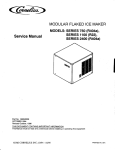
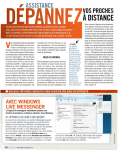

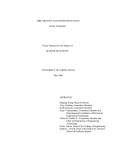
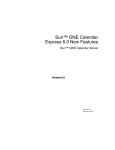
![[U4.41.11] Opérateur MODI_MODELE_XFEM](http://vs1.manualzilla.com/store/data/006358678_1-c0e4858b107518051371308d7145a340-150x150.png)
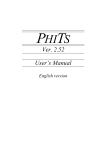
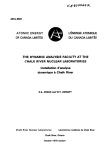
![[U4.41.11] Opérateur MODI_MODELE_XFEM](http://vs1.manualzilla.com/store/data/006356988_1-d4d7714442bd436a62441fccb1410e36-150x150.png)
